DJI
DJI Inspire 2
Aprox. 2950€ - see price -
See specificationsAfter a very successful Phantom 4 Pro, it's the Inspire 2's turn to go upmarket. With a maximum advertised speed of 94 km / h, a range of 27 minutes and above all 5.2K video in RAW DNG, the Inspire 2 is aimed above all at image professionals and production companies. Will he be able to seduce them? Answer in our test!
Positive points
Look
Magnesium alloy structure
Retractable carbon fiber arms
FPV camera
Sensor redundancy
DJI Go 4 app
Dual microSD and SSD recording
5.2K 30p and 4K 60p
CineDNG RAW recording
Apple ProRes Registration
Recording in H.264 and H.265
Maximum speed of 94km / h
Overall performance
Various Automated Flight Mode
Relevant SpotLight Pro mode
Obstacle control with Return To Home
Lightbridge link for video transmission up to 3.5km (CE standard)
Ability to fly down to -20 ° C
Bad points
Price of the Inspire 2 kit + Zenmuse X5S + lens + high license key
Dimensions
Tedious pre-takeoff operations
Average autonomy
Photo quality at image periphery
Noise processing from ISO 1600
Tangle application
Our review
Presentation
The Inspire 2 is a professional drone which undoubtedly reinforces DJI's supremacy in the flying camera market. Based on a new structure composed of an alloy of magnesium and aluminum, it is able to reach the top speed of 94 km / h and accelerate from 0 to 80 km / h in 4 seconds. In addition to these characteristics ideal for filming on the road or sporting events, the dual battery system promises 27 minutes of autonomy, to fly up to 5000 m above sea level and at a temperature down to 'at -20 ° C. If these performances are in increase, the Inspire 2 also embeds stereo optical sensors at the front and below for the detection of obstacles, as well as infrared sensors on the top of the device, which help to protect it when flying in tight spaces.
However the major advantage of this Inspire 2 is its compatibility with the new Zenmuse X4S and X5S cameras. The Zenmuse X4S is composed of a 20 Mpx 1 inch sensor, with a dynamic range of 11.6 diaphragms and a focal length of 24 mm. The new Zenmuse X5S has a Micro 4/3 sensor with 20.8 MP and a dynamic range of 12.8 diaphragms. The Zenmuse X5S camera is compatible with 10 Micro 4/3 lenses ranging from wide-angle to zoom.
A new image processing system, called CineCore 2.0, is built into the chassis of the device and can process large files faster. The Inspire 2 captures 5.2K video at 4.2 Gb / s for the Adobe CinemaDNG RAW format and incorporates fast CineSSD storage to handle the huge stream of images. Several video compression formats are available, including Adobe CinemaDNG, Apple ProRes 422 HQ (5.2K, 4K) and ProRes 4444 XQ (4K), H.264 and H.265. For these last two formats, the recording is done simply on SD card.
In addition, there are automated flight modes, such as Spotlight Pro mode, which targets a subject while the aircraft is flying freely in a completely different direction; the device turns on itself automatically, to keep the target in the frame. Thanks to the front camera, TapFly mode directs the device to any point on the screen while avoiding obstacles in its path. ActiveTrack identifies common subjects (people, vehicles or animals) and orders the Inspire 2 to follow them and film them from the side while flying forward and taking advantage of obstacle detection to keep the device in security.
The flight experience and the shooting can also be decoupled, since a front camera sends a video stream to the pilot, while the cameraman can receive the video stream recorded by the Zenmuse on another screen. The distance between the two remote controls can now be increased to 100 m.
The sale price of the Inspire 2 drone is € 3,399. The Inspire 2 Combo, including an Inspire 2 drone, a Zenmuse X5S camera, as well as the CinemaDNG and Apple ProRes license keys, is available for € 7,098. DJI Care Refresh insurance applies to the Inspire 2 and Zenmuse X4S and X5S cameras, with copies of priority replacements (up to 2 over a year).
For our test we received the Inspire 2 drone equipped with two batteries, a charger that can recharge up to 4 batteries simultaneously, two sets of propellers, two remote controls, the X5S camera and a 15 lens mm f / 1.7 marked DJI, but which our readers will have recognized as being a Panasonic.
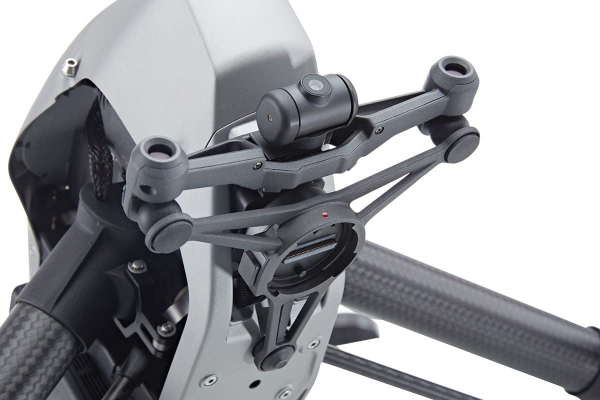
Image quality
In video, the 4K image is excellent and detailed across the whole field. The result is flattering and clearly usable directly from the sensor. Of course, you can use Cinelike or S-Log image modes for more flexibility in post-production, but H264 compression provides sufficient image quality in most situations.
In HDTV 1080, our feeling is a little more mixed. The image is good, but compared to 4K rendering, the difference is obvious and some compression artifacts are visible.
As for 5.2K in CineDNG, we are not satisfied with the demosaicing solutions at our disposal. The resources of our computer do not allow us to correctly convert the image and the times to create proxies are abominably long: 3 hours 30 minutes for a rush of 3 minutes. To give you an idea of what we have to deal with, 20 minutes of 5.2K 30p recording in Adobe Cinema DNG represents 420 GB of images ...
Rush 4K 60p editing example
Image from 5.2K rush in Adobe Cinema DNG
In photos, the large Micro 4/3 sensor delivers images of 20.2 MP with a dynamic range of almost 13 diaphs. If the rendering in high sensitivities is not breathtaking (we expected better in processing the signal / noise ratio), the image quality gives full satisfaction up to ISO 800. It will of course be a function of the objectives used, but with our test objective , the image is well pricked in the center from the full opening and delivers its full potential at f / 5.6. On the other hand, we are surprised by the lack of homogeneity on the edges. The center presents a beautiful accutance, but going towards the periphery, the details lose their crispness. We also notice chromatic aberrations on the strongest contrasts. We clearly advise you to work in RAW for more flexibility on files, at least in photos. After switching to your favorite post-production software, it will be easy to add a lot more pep to your image.
Examples of aerial images taken with the Inspire 2
The different shooting functions allow you to achieve bursts up to 20 fps and bracketing for HDR at altitude.
Here is the list set out by DJI of currently compatible lenses: - DJI MFT 15 mm f / 1.7 ASPH; - Olympus M.Zuiko 12 mm f / 2, 17 mm f / 1.8, 25 mm f / 1.8, 45 mm f / 1.8, 9-18 mm f / 4-5.6; - Panasonic Leica Summilux 15mm f / 1.7 and 14-42mm f / 3.5-5.6 HD.
Examples of photo studio
We had in our keychain the Olympus M.Zuiko 12 mm f / 2 and 45 mm f / 1.8, and indeed, the AF was functional and the objectives, recognized by the system.
Despite our frustration at not having been able to use Adobe CineDNG RAW for the moment, the capture experience is worth the investment and is part of the marketing ambition set by DJI: build flying cameras. The Inspire 2 is indeed a flying camera for professionals and it will give full satisfaction to production companies needing aerial shots.
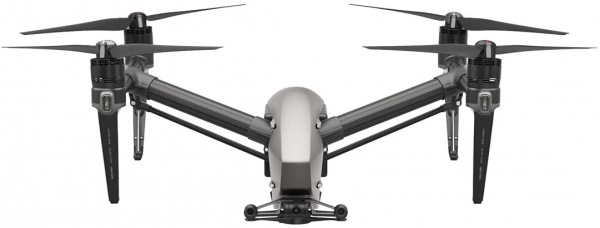
Verdict
The question of whether we recommend the purchase of the Inspire 2 does not arise: its positioning is more intended for image professionals and the investment deserves to be profitable. In this context, the Inspire 2 can perfectly complement a workflow with a Black Magic, for example, since it is in Micro 4/3 mount and 8 lenses will be compatible. Obviously, we can be satisfied with the Zenmuse X4S camera equipped with a 1 inch sensor, but our Phantom 4 Pro test also equipped with a 1 inch sensor lets us think that it is with the X5S that the Inspire 2 delivers its full potential and ensures an unrivaled positioning.
In addition, the Inspire 2 offers a particularly attractive flight experience. It overcomes obstacles and constraints of piloting brilliantly - not to mention that thanks to the SpotlightPro function, it is possible to follow a subject while keeping control of the camera. Definitely, DJI is positioned as the leader in flying cameras, by offering not only a panoply of functions and recording formats, but also an image quality largely at the level of a multichannel broadcast.
Be careful though: if the 5.2K CineDNG recording leaves you dreaming, it will be imperative to think about the storage of the rushes, their conversion and their processing. And it is not an easy task. In addition, the Inspire 2 is not free from defects, starting with its size. With its 3.29 kg without carrycot and its 60 cm diagonal, it is not transported in a simple bag and requires to be stored in a suitcase. Suddenly, the pre-takeoff procedure is meticulous and requires a minimum of preparation, even if there is nothing rocket science.
In the end, therefore, the Inspire 2 brilliantly covers the range of DJI drones with flying colors and wins the prize for the best professional drone we have tested. At our level, we do not hide from you that we keep a preference of use for the Mavic Pro, which already offers an unbeatable price / performance ratio and size, but we do not compare them: they do not play in the same category. The Inspire 2 is quite simply a jewel of aerial capture which is intended above all for production companies.
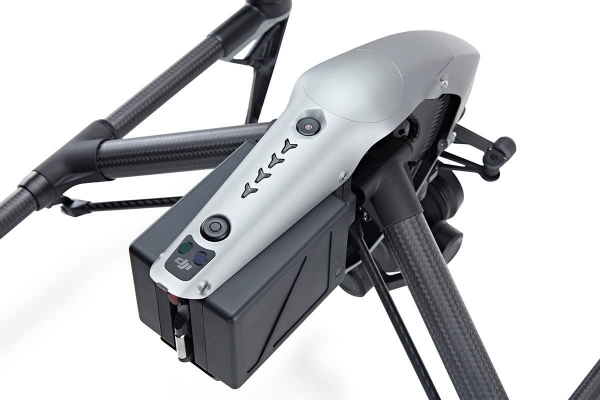
Conclusion
Inspire 2 is a "must have" that is primarily intended for professionals in aerial photography. Complete, intuitive and packed with assistance, it will deliver breathtaking areal images with great ease. However beware of recording in RAW in 5.2K: it's nice on paper but a hassle to deal with.
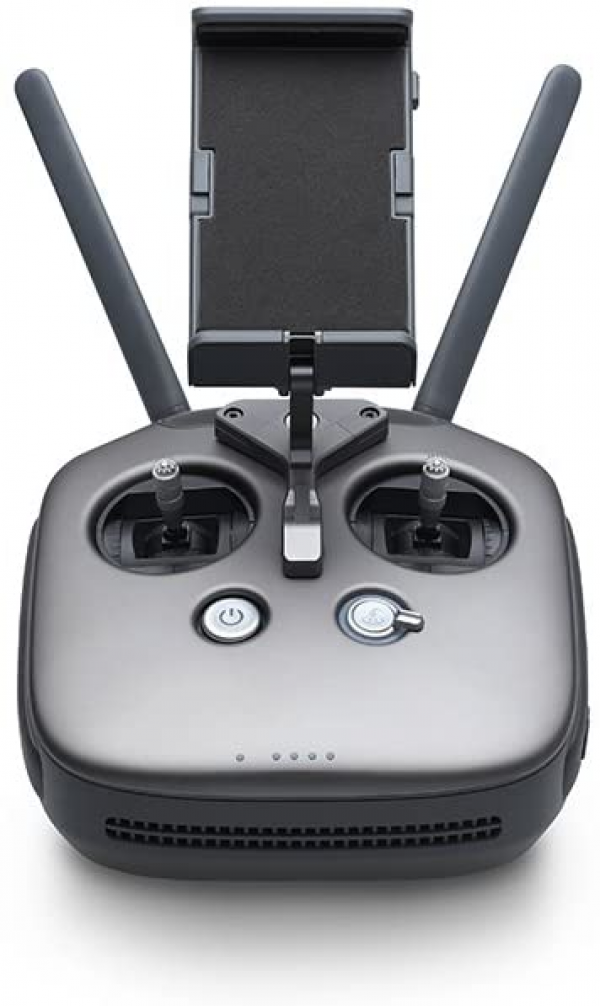
Specifications
Reviews

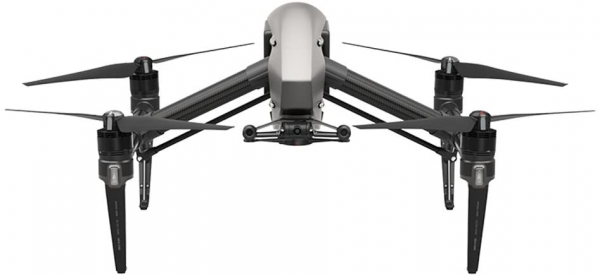
they sell used products as if they were new the information is confusing
I need a new product from the factory, during my purchase select the box of the new product filter it does not work if it is remanufactured even if it is certified I require the return of the purchase
Very Nice
I've had this Inspire 2 for a month now and love it. The only issue I've had is with the propeller mounts which have a little play. I was able to fix it myself with some foam and paper shims inside the propeller but I hope dji has addressed the issue soon. The performance is incredible and the flight time is greatly improved over the Inspire 1. Get this with an X5S camera or don't bother. The X4S is good, but might as well get a Phantom 4 pro if you do that.
Overpriced for what it actually cost.
Don't get me wrong, this is a very nice and well made product but it's way overpriced. Plus, if customer service was great, then they would have a pass. I just don't understand why they have such a terrible post-selling department.
Spy Drone?
Spy Drone?
Was going to purchase then I viewed a news story that DJI (China) was archiving all footage & data from drones sold in the USA surprised that Amazon still allowing sales of DJI drones.
If the information is correct why would any one living in the USA want to fly a DJI Drone?